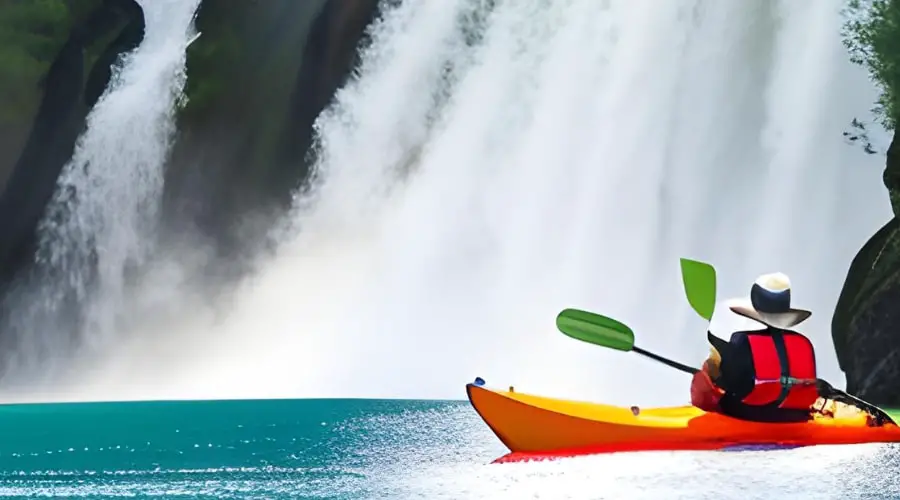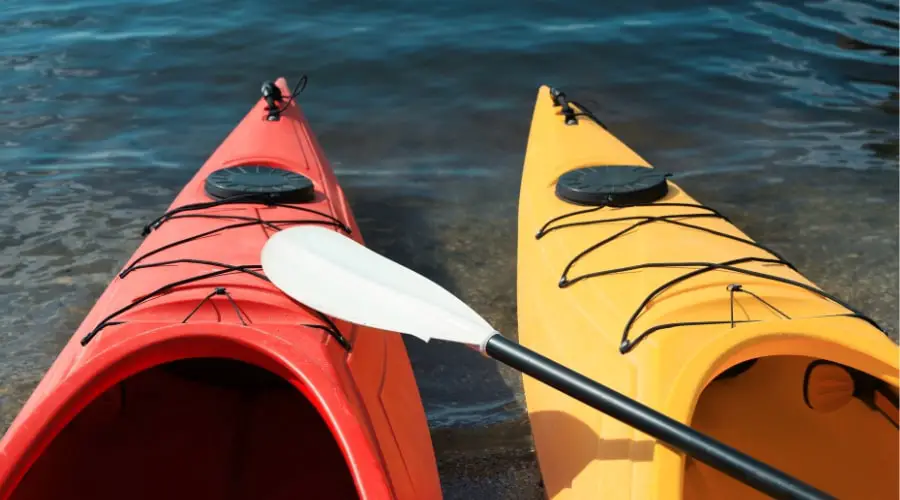Kayaking is a fun and exciting outdoor activity that offers a great way to explore the waterways. However, it can be intimidating for beginners with all the different terms and jargons used in the sport. In this article, we will provide a comprehensive guide to kayak terminology, from the basic parts of a kayak to the various strokes and maneuvers used in kayaking.

Basic Parts of a Kayak
Before we delve into the different types of kayaks and kayaking techniques, let’s start with the basic parts of a kayak. Knowing the different parts of a kayak is essential in understanding the different types of kayaks and how they work.
Hull
The hull is the bottom part of the kayak that comes in contact with the water. It can either be a flat bottom or a rounded bottom, depending on the type of kayak.
Deck
The deck is the top part of the kayak that covers the hull. It provides a flat surface for the kayaker to sit on and hold on to.
Cockpit
The cockpit is the area where the kayaker sits. It can either be an open cockpit or a closed cockpit, depending on the type of kayak.
Bow and Stern
The bow is the front part of the kayak, while the stern is the rear part of the kayak.
Skeg and Rudder
The skeg and rudder are both used to control the direction of the kayak. The skeg is a fixed fin at the rear of the kayak that helps keep the kayak moving straight. The rudder is a movable fin at the stern that helps turn the kayak.
Types of Kayaks
There are many different types of kayaks available, each with its own unique design and purpose. Here are some of the most common types of kayaks:
Sit-On-Top Kayak
A sit-on-top kayak has an open cockpit that allows the kayaker to sit on top of the kayak. It is popular for recreational paddling and is easy to use for beginners.
Sit-Inside Kayak
A sit-inside kayak has a closed cockpit that allows the kayaker to sit inside the kayak. It provides better protection from the elements and is popular for touring and whitewater kayaking.
Inflatable Kayak
An inflatable kayak is made of flexible material that can be inflated for use and deflated for storage. It is easy to transport and is popular for recreational paddling.
Whitewater Kayak
A whitewater kayak is designed for use in fast-moving water and is built to withstand the impact of rocks and obstacles. It is usually short and maneuverable, with a rounded hull and a flat bottom.
Touring Kayak
A touring kayak is designed for long-distance paddling and is built for speed and stability. It has a longer and narrower hull than a recreational kayak and is usually equipped with storage compartments for gear.
Sea Kayak
A sea kayak is designed for paddling in the ocean and has a long and narrow hull that is efficient in cutting through waves. It is usually equipped with a rudder or a skeg to help control its direction.
Paddles and Paddle Parts
Paddles are the primary means of propulsion in kayaking. A kayak paddle consists of three parts: the shaft, the blade, and the grip.
Shaft
The shaft is the long, straight part of the paddle that the kayaker holds on to. It can be made of various materials, such as aluminum, fiberglass, or carbon fiber.
Blade
The blade is the wide, flat part of the paddle that is used to push against the water. It can be shaped differently depending on the type of kayaking, such as a flat blade for recreational paddling or a curved blade for whitewater kayaking.
Grip
The grip is the part of the paddle that the kayaker holds on to with their hands. It can be either straight or ergonomically shaped for a more comfortable grip.
Feathering
Feathering is the process of adjusting the angle of the blade to reduce wind resistance during paddling. It can be done by rotating the blade on the shaft or using a paddle with adjustable blades.
Kayaking Techniques
Kayaking requires different techniques and strokes to maneuver the kayak efficiently. Here are some of the most common kayaking techniques:
Forward Stroke
The forward stroke is the most basic and essential stroke in kayaking. It involves a straight and efficient paddling motion to move the kayak forward.
Sweep Stroke
The sweep stroke is used to turn the kayak in a wide arc. It involves sweeping the blade in a wide arc away from the kayak.
Draw Stroke
The draw stroke is used to move the kayak sideways. It involves pulling the blade towards the kayak while maintaining a vertical position.
Brace Stroke
The brace stroke is used to keep the kayak stable in rough water or during a capsize. It involves placing the blade flat on the surface of the water to provide support.
Roll
The roll is a technique used to right a capsized kayak without exiting the cockpit. It requires proper technique and practice and is usually learned with the help of a kayaking instructor.

Safety Equipment
Safety equipment is crucial in kayaking to ensure a safe and enjoyable experience. Here are some of the essential safety equipment for kayaking:
Personal Flotation Device (PFD)
A personal flotation device is a life jacket that provides buoyancy and helps keep the kayaker afloat in the water.
Helmet
A helmet is essential in whitewater kayaking to protect the head from impact during a capsize.
Spray Skirt
A spray skirt is a cover that attaches to the cockpit of a sit-inside kayak to prevent water from entering the cockpit.
Rescue Equipment
Rescue equipment, such as a throw bag or a rescue harness, can be used to rescue a kayaker in distress.
Related: 100 Funny Kayaking Quotes
FAQs:
Do I need to know how to swim to go kayaking?
While it is recommended to know how to swim, wearing a personal flotation device (PFD) can help keep you afloat in the water.
Can I go kayaking alone?
It is generally not recommended to go kayaking alone, especially if you are a beginner. It is always better to go with a partner or in a group.
How do I choose the right size paddle for me?
The size of the paddle depends on your height and the width of the kayak. A general rule of thumb is to choose a paddle that is 6-8 inches taller than your height.
Can I kayak in the rain?
Yes, you can kayak in the rain, but make sure to wear appropriate clothing and bring a waterproof bag for your belongings.
What should I do if my kayak capsizes?
Stay calm and try to stay with the kayak. If you are in a group, signal for help. If you are alone, try to right the kayak and get back in. If you can’t, stay with the kayak and wait for help to arrive.
Conclusion
Kayaking is a fun and rewarding outdoor activity that can be enjoyed by people of all ages and skill levels. Understanding the different terms and jargon used in kayaking is essential in becoming a competent and safe kayaker. By following the techniques and safety equipment outlined in this article, you can have a safe and enjoyable kayaking experience.
